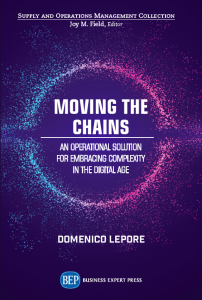
Every company has to coordinate and synchronize internal and external actions to get results. That’s the way every industry works and success depends on it. We can call it Project Management.
There are thousands, if not millions, of well-meaning Project Managers around the world whose job is to help projects work. People spend millions of dollars every year on certificates from organizations like the Project Management Institute (PMI) to prove their PM ability. And yet, the vast majority of projects fail to complete on time and within budget. Something is clearly not working here.
We were invited to do two webinars for PMI and the last one Leading Change Through Project Management has been seen by over 8,500 members – we are still receiving regular views and positive comments. At Intelligent Management we base our methodology on Deming and The Theory of Constraints (TOC). TOC contains a radically straightforward and highly effective method for Project Management called Critical Chain that has been used successfully for years by sectors that rely on effective and timely project execution including aerospace, military, pharmaceutical, biotech and medical research. While neither of our webinars were aimed at “teaching” Critical Chain we did present it as the engine of our systemic, Network of Projects organization design.
Afterwards, one PMI member wrote to me to say they had just renewed their PMP certificate but were:
disappointed. I could not find any other Webinar about Theory of Constraints (TOC) and Goldratt’s ideas…The PMBOK Guide 6th edition also just mention TOC. No discussion about the powerful TOC concepts.
Why are they keeping the Critical Chain Method (and TOC) a secret?
We’re not surprised they couldn’t find anything else about TOC. It’s not really in PMI’s interest to advertise TOC or Critical Chain. so they even removed the content about it from their guidebook.
At the same time, almost every week there are ads on LinkedIn for people with knowledge of Critical Chain from top players in the military, aerospace and biotech sectors (to name a few) because they know that it’s the most effective means to carry out a project reliably. Organizations use the Critical Chain method, to quote one job ad, to improve business value, reliability and implementation timelines. The value and reliability are there because of scientific principles that Goldratt embedded in Critical Chain. If you ignore those principles you will slow your projects down. (See our post Why Projects Complete “Sooner or Later…”).
What’s the goal?
The problem is that PMI may be a non-profit but it does have a “business model”. They sell membership and training and they encourage members to accumulate points and certificates. (They would not allow us to include slides in our webinar about our books or promote anything that is not a PMI product.)
The methodology, behaviours and mindset that come with Critical Chain contradict what PMI “sell” and this, in our opinion, would explain why they provide so little information about it.
From our perspective at Intelligent Management, Critical Chain goes well beyond a “technique” for Project Management. It is a systemic approach that requires a mindset where multi-tasking and student syndrome behaviours are alien and where people act as part of one, unified flow. This in turn means that the more an organization is in silos the harder it is to enable that flow. So for us, Critical Chain has become the harbinger of a new model of an organization as one, whole system.
For individuals and companies, investing in Critical Chain can only be a winning strategy, even if PMI keeps it away from its members.
Here are just some of the hundreds of positive comments we received from PMI members on our webinar…
I enjoy the writings of Goldratt, theory of constraints. I used the original book “the goal” for in house training for the interns. It is a pity that PMI removed critical chain from 6th ED
Using Project Management as a catalyst and controller of change is invaluable.
NETWORK OF PROJECTS’ is an excellent deconstruction of the situation in a company that handles an increasing number of complex projects concurrently with limited staff. Every member of staff, as Angela explains, is a project team member, on one team or the other or on multiple projects. This approach does maximize the utility of every individual in the company, optimizes workflow and certainly boosts the bottom line
My company is trying to go through a transformation. Your webinar gives me hope that we can turn things around here.
Very interesting. It puts project management at the center of change management, innovation, and employee engagement/learning.
I particularly like the fact that you recognised that more traditional hierarchical organisational structures hinder rather than facilitate complex change.”
It puts project management at the center of change management, innovation, and employee engagement/learning.
See our Critical Chain Education Module






Leave a Reply